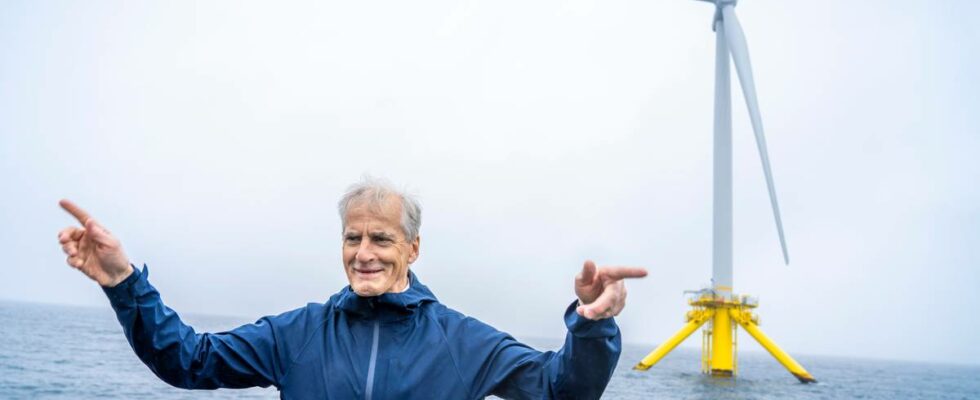The case in summary: – Sweden has canceled 13 offshore wind projects in the Baltic Sea, something that came as a surprise to the Norwegian wind power industry. – This could lead to less technological development and higher electricity prices in Norway. – Capital that was supposed to go to Swedish offshore wind projects could be redirected to Norway, something that could lead to greater investments in technological development. – Less offshore wind capacity in the Baltic Sea can increase the pressure on other energy sources and lead to greater investments in batteries or other storage methods. – The is a risk that Norway will fall behind in the offshore wind investment, especially since Denmark has already taken a leading position in Europe. The summary is made by an AI service from OpenAI. The content is quality assured by news’s journalists before publication. This week, the Swedish government announced that it is pulling the emergency brake. The decision to scrap 13 offshore wind projects in the Austersjøen was characterized as “a bombshell” and came suddenly on the Norwegian wind power industry. The cancellation also came as a shock to NVE, which has assumed that the neighboring country should build a lot of offshore wind (9 TWh) by 2040. The background for the turnaround is warnings from the Swedish defense that the fields in question will reduce defense capabilities and weaken radar surveillance in Sweden. Defense interests and possible disruption of radar systems mean that Sweden says no to a number of offshore wind farms in the Baltic Sea. Those who have been refused are marked in red. Photo: Sweden’s government According to a new NVE report (see below), there must be a “dramatic technological development” or an equally dramatic drop in costs if Norwegian offshore wind is to become competitive. With the Swedes saying no, both of these assumptions change: The Norwegian offshore wind investment gets less traction from technological development on the Swedish side. In return, the electricity price can be higher with less offshore wind in the mix. And the higher the electricity price, the more profitable for developers. Or what the taxpayers may want to focus on: The less need for government subsidies. Below is an overview of what the Swedes’ no to offshore wind could mean for Norway. About the NVE report Many have claimed that the NVE report “Development in the power market towards 2050” is a bone of contention for Norwegian offshore wind. The energy grid city Europower suggests that the government has tried to hide an embarrassing section in the latest NVE report (“Development in the power market towards 2050”). The background is an omission about sea wind in the press release. “Perhaps out of consideration for the government”, writes commentator in the newspaper, Haakon Barstad. According to the report, there must be a “dramatic technological development” or an equally dramatic drop in costs if Norwegian offshore wind is to become competitive. “We are confident in our conclusions,” said NVE director Kjetil Lund at the opening of NVE’s annual conference in October. Several mediums have made a point that NVE’s “fearless” conclusion is an embarrassment to the government, which has gained great prestige in the offshore wind investment. “A torpedo in during the offshore wind venture”, reports Montelnews. Higher electricity prices With fewer offshore wind projects in the Baltic Sea, there will be less energy capacity in the Nordic market. This can lead to higher electricity prices, especially in periods of high demand. Free capital Capital that was intended for the Swedish offshore wind project can be redirected to Norway. Increased interest from abroad can lead to greater investments in technological development, which in turn can reduce costs and accelerate the development of the Norwegian offshore wind industry. Reasonable input factors Downscaling in Sweden can affect the supply chains that supply technology and services to the offshore wind industry. Some of these suppliers can now focus more on Norway, which can lead to better prices and more available resources for Norwegian projects. Increased pressure on other energy sources Less offshore wind capacity in the Baltic can increase the pressure on other energy sources. To ensure stability, it may be necessary to invest in batteries or other storage methods, such as pumped power stations or thermal storage. – It is a tough message to give, said Sweden’s energy minister Ebba Busch during the press conference. Photo: Tim Aro/TT / NTB New plans The Swedish decision may lead to Norwegian authorities reassessing their own plans and strategies for offshore wind, both to attract investment and to ensure energy security. Energy policy = security policy Security policy considerations are behind the Swedish no. If safety becomes a bigger factor in the offshore wind investment, it may affect the desire to invest. – Great risk of Norway falling behind Overall, the Swedes’ no can create waves on the Norwegian continental shelf. The optimists think we can catch up with the Danes, who have transformed the port of Odense from a shipyard to a production port for offshore wind. Dagens Næringsliv has previously obtained an internal Ministry of Foreign Affairs memo which warns that there is a “great risk of Norway falling behind in offshore wind”. The background was a summit with government leaders from Germany, the Netherlands, Belgium and Denmark to which Norway was not invited. “When there is talk of the North Sea as Europe’s green power plant without Norway being involved, it means that Denmark is about to take a leadership position that may be difficult to take back,” warned the Foreign Ministry memo. Published 09.11.2024, at 09.50
ttn-69
This means the Swedes say no to offshore wind for Norway – news Vestland

